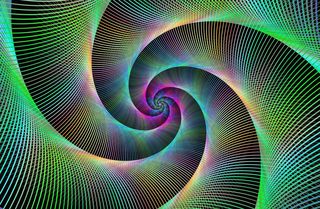Creativity
Empirical Study Reveals 14 Key Components of Creativity
Both social interaction and the ability to work independently figure in.
Posted January 31, 2018
In a world where robots seem to be taking over the world, the hottest buzzword amongst recruiters is “creative.” In every field, employers are desperately searching for “highly creative” human candidates. But ask recruiters and employers what constitutes creativity—and how they will recognize a creative person—and they are flummoxed.

While we all have a generic idea of what creativity is and assume we easily recognize creative individuals, defining what makes someone highly creative has eluded many, including scholars.
In an effort to pin down what is crucial to the act of creativity, researcher Jordanous Keller conducted an empirical study and analysis of language commonly used to talk or write about creativity[1]. Using tools from natural language processing and statistical analysis, he and his team identified words that appeared to be highly associated with dimensions of creativity. Keller then chose 30 research papers examining creativity from various academic standpoints, ranging from psychological studies to computational models. His criteria:
- Papers had to be primarily focused on the nature of creativity.
- Papers had to be considered particularly influential, either cited often by academic authors or based on a subjective judgment of influence grounded in knowledge of the field.
- Papers had to represent a cross-section of years over the range 1950-2009.[2]
- Papers had to represent a cross-section of disciplines relevant to discussions of creativity.
To identify what is distinctive in the language used to discuss creativity, in contrast to the language used to discuss other topics, the researchers also selected 60 academic papers on topics unrelated to creativity, from the same range of academic disciplines and publication years as the creativity corpus papers.
Keller and his team used a statistical measure of lexical similarity, which clustered any words related to creativity into coherent and semantically related groups. Clustering revealed 694 keywords associated with creativity and 14 common themes or components of creativity.
Keller noted that not all of the components have to be present and that some components may seem to contradict each other, such as the need to work independently and the need for social interaction, noting that these usually occur during different stages of creation.
The 14 key components of creativity were identified as:
- Active Involvement and Persistence: Being proactively involved in a cognitive process from which an idea or product results. Being tenacious enough to continue the quest, even when thwarted by obstacles.
- Comfort with Uncertainty: Able to cope when incomplete, missing, inconsistent, contradictory, ambiguous and/or uncertain information involved. Comfortable not knowing what to expect and willing to risk failure. Comfortable avoiding routine or pre-existing methods and solutions.
- Domain Competence: Possesses domain-specific intelligence, knowledge, talent, skills, experience, and expertise that will recognize gaps, needs, or problems that need solving and to generate, validate, develop and promote revolutionary ideas in that domain.
- General Intellectual Ability: Genius is not required but good general intelligence and IQ is a key element.
- Generation of Results: Working towards some end target, goal, or result and producing something (tangible or intangible) that previously did not exist.
- Independence and Freedom: Capable of working independently, ideally with autonomy over actions and decisions—free to work without being bound to pre-existing solutions, processes, or biases. If constricted, willing to challenge cultural or domain norms.
- Intention and Emotional Involvement: Having an intention and desire to be creative as its own reward—viewing creativity as a positive process that offers fulfillment and enjoyment irrespective of the outcome. Personal and emotional investment, immersion, self-expression, and involvement in the creative process.
- Originality: Results in a new product, or doing something in a new way, or seeing new links and relations between previously unassociated concepts. Results are often unpredictable, unexpected, surprising, unusual, and/or out of the ordinary.
- Progression and Development: There’s movement, advancement, evolution, and development during the creative process. While progress may or may not be linear, and an actual end goal may be only loosely specified (if at all), the entire process should represent some level of progress in a particular domain or task.
- Social Interaction and Communication: Communicating and promoting work to others in a persuasive and positive manner. Mutual influence, feedback, sharing, and collaboration between society and individual.
- Spontaneity/Subconscious Processing: Creator doesn’t need to be in control of the whole process; his or her thoughts and activities may inform the process subconsciously or may receive less attention than others. The creator is able to react quickly and spontaneously when appropriate.
- Thinking and Evaluation: Using reasoning and good judgment to consciously evaluate several options, to recognize potential value in each and identify the best option. Proactively selecting a decided choice from possible options, without allowing the process to stagnate under indecision.
- Value: Making a useful contribution that is valued by others and recognized as an achievement and influential advancement; perceived as special, ‘not just something anybody would have done’. The end product is relevant and appropriate to the domain.
- Variety, Divergence, and Experimentation: Generating a variety of different ideas to compare and choose from, with the flexibility to be open to several perspectives and to experiment and try different options without bias. Multi-tasking during the creative process allows ideas to emerge when the cognitive focus has been diverted.
To identify a potential employee who is creative will require a bit more digging, which I’ll be doing in several upcoming blogs—so, if you’re interested in finding highly creative employees or becoming more creative, please stay tuned.
References
[1] Jordanous A, Keller B (2016) Modeling Creativity: Identifying Key Components through a Corpus-Based Approach. PLoS ONE 11(10): e0162959. https://doi.org/10.1371/journal.pone.0162959
[2] The corpus was compiled in 2010. 1950 was chosen as a starting point in recognition of the effect of J. P. Guilford’s presidential address to the American Psychological Association, which examined contemporary creativity research (or more specifically, the lack of thereof). His talk was highly influential in encouraging more creativity research activity.


